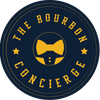Whiskey: For Consumption or Investment?
Investing in consumable assets is not a new concept; the wine industry has seen individuals buying thousands of bottles of wine from specific vintages, perhaps drinking some, and then later selling others. The basic principle is that the wine will increase in scarcity over time and the exact release can never be replicated due to environmental conditions. While this same concept is applicable to whiskey, individuals buying whiskey for the purposes of investment is a relatively new trend, and the popularity of whiskey for consumers has exponentially increased the scarcity component for many highly reviewed and sought after vintages.
Over the last decade, the US whiskey market has seen production grow by more than 150%, which is a direct response to growth in sales and general popularity. This growth has seen demand increase for bottles that more experienced enthusiasts would consider collectible or limited edition releases as well as for new enthusiasts to seek out and try. In the past 4 years, the demand for these types of bottles has grown exponentially, creating huge supply and demand issues that have led many collectors away from consuming and into holding for future value. In this post, I will look at some of the most highly sought after bottles starting in 2016 and evaluate their acquisition cost growth to present day.
The data below represents eight different bottles by tracking their acquisition costs from 2016 to the present day through legal markets. Distilleries always release suggested retail pricing (SRP) for all releases, but obtaining releases at that price is typically limited to controlled allocation states. The eight bottles reviewed are the following:
- Pappy Van Winkle 23 Year – An annual release from Buffalo Trace consisting of their premier brand of wheated bourbon aged 23 years
- Pappy Van Winkle 20 Year – An annual release from Buffalo Trace consisting of their premier brand of wheated bourbon aged 20 years
- William Larue Weller 2016 – An annual release from Buffalo Trace as part of their Buffalo Trace Antique Collection consisting of their wheated bourbon bottled at cask strength
- Colonel E.H. Taylor Sour Mash – A limited release from Buffalo Trace under the E.H. Taylor brand from 2011 meant to mimic the sour mash process used by the original Colonel E.H. Taylor
- Colonel E.H. Taylor Tornado Surviving Warehouse C – A limited release from Buffalo Trace under the E.H. Taylor brand bottled from barrels that were exposed to natural elements for a summer after a tornado pulled off the walls and roof to the warehouse C
- Colonel E.H. Taylor Cured Oak – A limited release from Buffalo Trace under the E.H Taylor brand bottled from barrels that were made with staves cured for 12 months, twice as long as typical barrel staves
- Michter’s 20 Year 2016 – A periodic limited release from Michter’s containing 20 year whiskey from an undisclosed source
- Booker’s Rye – A special 2016 release from Booker’s, the first rye whiskey released under that brand
 click on the chart image to view in larger size
click on the chart image to view in larger size
For someone who might have acquired these bottles for consumption back in 2016, the value has increased so dramatically that they could be considered a viable investment that might have outperformed a traditional investment over the same time period. Across all of the bottles there is an average of a 448% increase and from a trending standpoint our experts here at The Bourbon Concierge don’t see this slowing down any time soon. I have seen everything across the Pappy Van Winkle line up increasing, the Buffalo Trace Antique collection continuing to rise, vintage selections from shuttered distilleries becoming more popular, and even limited releases from distilleries that were sought after until recently such as the WhistlePig Boss Hog releases which have increased almost 500% in the past 4 months. As I evaluate the data, the goal is to find commonalities between these releases which drives us to a few characteristics:
- All of these bottles are from highly regarded distilleries that have brand recognition both with modern collectors as well as historical enthusiasts
- The brands of the bottles themselves are widely known and searched for by enthusiasts, collectors, and everyday drinkers
- While some of these are annual releases, each of them is very limited in distribution, production, and availability. Even the annual releases typically have extremely low yields creating high demand and low supply
- The whiskey inside is delicious. These are bottles in which the distilleries themselves try to put their best product possible. These are bottles that “whiskey drinkers, not collectors” will seek out for the purpose of consumption, further driving the supply and demand issue.
- Each brand continues to release limited edition bottlings or newer versions of the annual releases that differ from the prior versions. This ensures that collectors continue to seek them out, and the older ones continue to appreciate in value
This is not investment advice or drinking advice, but if someone asked me to recommend whiskies to drink, I would definitely recommend the bottles on the list. On the same token, if someone asked me for whiskies that would appreciate in value, I would also provide the same bottles on the list. There are many more whiskies that fit these characteristics and have only recently started to see the appreciation depicted above, and others which are prime candidates for that such as the upcoming EH Taylor Warehouse C release, A.H Hirsch bottlings, Stitzel Weller Bottlings, and other vintage bottles from distilleries long shuttered.
With all that being said though, if my financial advisor told me simply by not drinking a whiskey I can buy today that I could net a 448% return on value in 4 years, I would be hard pressed to find myself opening and drinking that amazing whiskey.




